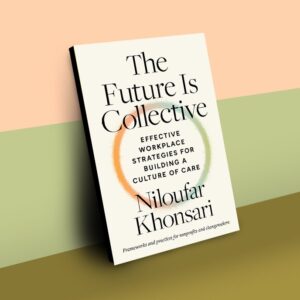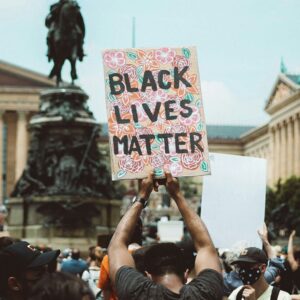
Did you know that we are paying for our own harm?
According to OpenSecrets, the top 20 lobbying industries in 2024 spent $2.8 billion to influence federal legislation. This does not include Super PACs and lobbying at the state and local levels.
Where did all that money come from? From us, of course. When we buy stuff, a percentage of revenues is allocated to lobbying by corporations, regardless of consumer preferences. So when you buy gas or a hamburger, or fill a prescription, some percentage of your money will eventually find its way into a politician’s pocket or some lobbying effort to influence a lawmaker to pass laws or policies that you may not support and that might actually harm you.
Just one example is the oil and gas industry’s efforts to deny the existence of climate change, to control climate science overall, and to bolt in perpetual federal subsidies for their benefit. Earthday.org published a report in October 2024 titled The Gaslight Effect: Lobbying in the Fossil Fuel Industry. They wrote:
In 2022, the oil and gas sector invested approximately $124.4 million on federal lobbying efforts, as revealed by an Open Secrets analysis of lobbying records.…Major polluter Exxon Mobil reports spending over $7.7 million on federal lobbying in 2022 and Chevron has already paid over $3.9 million in federal lobbying expenses this year.…A newly released documentary, The White House Effect, perfectly captures how political leaders can be influenced by fossil fuel lobbying. In 1989, George H.W. Bush entered his presidency committed to supporting renewable energy to combat fossil fuel-caused climate change. By the end of his term, he had scrapped that goal and was openly casting doubt on climate science, echoing the fossil fuel lobby’s talking points.
[Nonprofits could] create a new add-on fee for the services they render and use that revenue to build political power.
As OpenSecrets further details, total spending by US businesses on federal lobbying in 2024 was $4.4 billion. The biggest spender, at $39.6 million, was the US Chamber of Commerce, which has been active in this game since the 1971 issuance of the Powell memo.
Let’s take a look at the arts and culture sector and compare. The Americans for the Arts Action Fund (the 501c4 lobbying and political arm of Americans for the Arts), reported in 2023 on their Form 990 that their total budget was $433,000, of which only $221,000 was spent on “program services” (which includes talking to legislators). Clearly, the arts—as a subset of the US nonprofit sector—has a long way to go to catch up with corporate America on its efforts to influence the government.
One Dollar to Fuel Political Power
If nonprofits wish to see their programs and priority solutions enacted and funded, it might be time to borrow a page from the Big Business playbook. One valuable strategy would be to create a new add-on fee for the services organizations render and use that revenue to build political power. For arts and culture nonprofits that have long charged customers for tickets, this would be a very easy strategy to implement.
In 2023, [a $1 dollar fee] would have produced at least $100 million for advancing the needs and programs of the nonprofit sector in civics and public policy.
The arts and culture sector has seen little help from the federal government for most of the past 40 years. According to USAFacts, federal spending for the National Endowment for the Arts (NEA) decreased from $592.3 million in 1980 to $220 million in 2024, when adjusted for inflation. With Donald Trump as president, things have gotten much worse in 2025. But one reason federal arts programs have been so vulnerable to attacks is that the arts and culture sector has failed to build sufficient political power to have its program priorities enacted in Washington.
According to the NEA’s September 2024 report, 50 States of Arts Participation: 2022, 38 percent of all US adults reported attending a live performing arts event the previous year. That means that over 100 million adults in the United States attended at least one live performing arts event that year.
What would happen if all these US arts and cultural institutions were to add a modest $1 fee to their ticket price?
In 2023, such a program would have produced at least $100 million for advancing the needs and programs of the nonprofit sector in civics and public policy. Bear in mind too that the NEA report was based on data between July 2021 and June 2022—a period when attendance at events was lower due to the COVID pandemic; numbers today are likely significantly higher.
There are other benefits to implementing a fee, beyond the dollars collected. One of these is education of the public. Imagine if all theaters, galleries, museums, music spaces, and dance companies instituted such a program. They would have to explain why they were asking the public to fork over $1 per ticket and what the benefits to the community would be. They would have to explain why the health of the arts and creativity in the United States are matters of civic urgency and how the exercise of creativity is directly tied to the vitality of our economy, our health, and the effectiveness of our civic institutions.
Sharing the Wealth
How might this new pot of revenue be divided? I suggest that this money be distributed in some way between local and national service organizations.
In my hometown of Chicago, for example, over 13.4 million people visited local museums, zoos, and gardens in 2023 and 100,000 people attended the theater. These numbers would mean significant local funds going to, say, the League of Chicago Theatres and national funds to the American Alliance of Museums. The boards of directors of the recipient organizations could craft a plan for spending this money together and post it publicly.
Money raised from the $1 fee would not be used to support any particular candidate or party but could be used for:
- Training people from the creative sector to run for local office
- Lobbying elected officials to support the programs and needs of the arts and culture sectors and to promote the right to freedom of expression
- Communicating the benefits of creativity and the arts
Ask yourself if paying an extra dollar would discourage your attendance.…I know that I’d happily pay a bit more knowing I was helping build power inside the arts and culture sector.
This $1 fee program might even have its own staff and issue quarterly reports on its activities and expenses. The staff could be governed by a committee appointed by the boards of the recipient organizations. Or the recipient organizations might agree to house the administration inside one of their organizations and collect an annual fee from the fund to cover the costs of administration.
We are potentially talking about hundreds of millions of dollars of new money being collected, stored, and distributed for building power for nonprofits—in this example, for arts and culture nonprofits. Careful thought would have to be given to making sure that these funds are used as advertised and that they do not get misused or somehow intercepted by bad actors.
Opportunity Knocking
When you go to the theater, a museum, the symphony, or a dance performance, ask yourself if paying an extra dollar would discourage your attendance. We wince when we see a $10 or even $20 ticket surcharge added by Ticketmaster, but many of us pay it. I know that I’d happily pay a bit more knowing I was helping build power inside the arts and culture sector.
Now imagine if all nonprofits across the country did this. Almost everyone interacts with nonprofits in some way: Consider the millions of people who use the Red Cross, the arts, local food banks, shelters, YMCAs, nonprofit hospitals, liberal religious institutions, and the list goes on.
And yet, according to the National Council of Nonprofits report Nonprofit Impact Matters: How America’s Charitable Nonprofits Strengthen Communities and Improve Lives, less than 3 percent of nonprofits lobby to advance their missions. We can do better.
So let’s start with the arts and introduce the concept of a $1 fee to their customers and stakeholders. If the idea of supporting nonprofit advocacy can take off in the arts and culture sector, it could spread from there.














